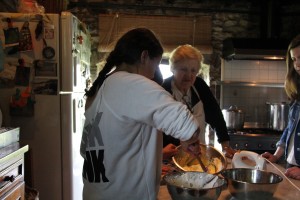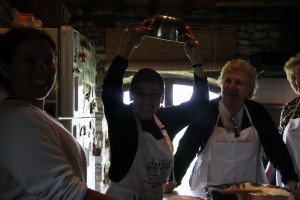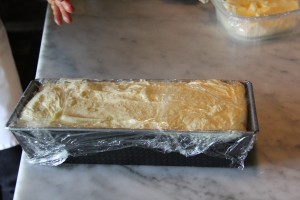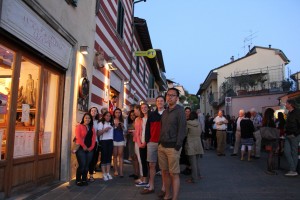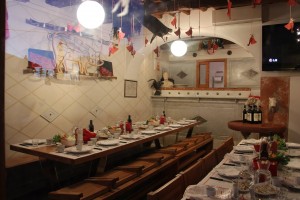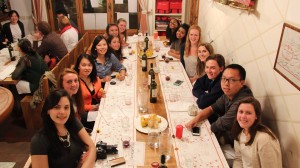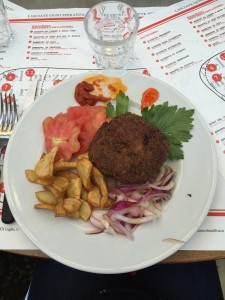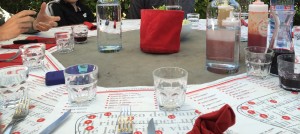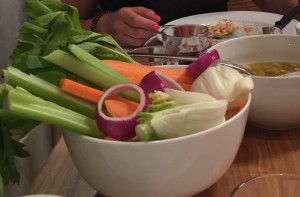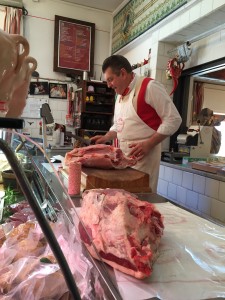Chianti Classico
June 12th, 2016 by cmconn18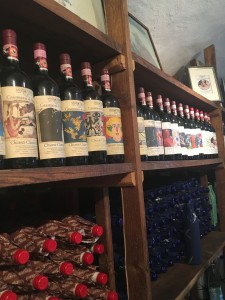 During my short time in Italy, it has become clear to me that wine is a very integral part of the culture and history here; especially in the region of Chianti (where we are staying) which is the birthplace of Chianti Classico. One particular visit to the vineyard of Nittardi she even more light on the Tuscan trademark that is the Chianti Classico. In order for a wine to be a chianti classic it must be made from at least eighty percent Sangiovese grapes; however the Chianti Classico that Leon—the owner of Nittardi—makes is one hundred percent Sangiovese. Leon shared with us the history of the area and how the Chianti Classico came to be. Many, many years ago the region of Chianti was constantly being fought over by Siena and Florence, both major cities wanting to claim the abundant and fruitful lands for themselves. The story says that at one point, to settle the dispute, the two cities would send a horseman out and wherever they crossed paths (presumably in the middle) would be the “property line.” The rule for when to begin this race was when the first rooster crowed. Florence, in order to try to get the upper hand, starved their rooster for days before the race so that they would wake up earlier from their slumber. For this reason, a rooster can be found on the neck of the bottle of all Chianti Classico wines. Listening to Leon talk, it is incredibly clear how much pride he holds in what he does, the history of his home and how much the land has shaped the product.
During my short time in Italy, it has become clear to me that wine is a very integral part of the culture and history here; especially in the region of Chianti (where we are staying) which is the birthplace of Chianti Classico. One particular visit to the vineyard of Nittardi she even more light on the Tuscan trademark that is the Chianti Classico. In order for a wine to be a chianti classic it must be made from at least eighty percent Sangiovese grapes; however the Chianti Classico that Leon—the owner of Nittardi—makes is one hundred percent Sangiovese. Leon shared with us the history of the area and how the Chianti Classico came to be. Many, many years ago the region of Chianti was constantly being fought over by Siena and Florence, both major cities wanting to claim the abundant and fruitful lands for themselves. The story says that at one point, to settle the dispute, the two cities would send a horseman out and wherever they crossed paths (presumably in the middle) would be the “property line.” The rule for when to begin this race was when the first rooster crowed. Florence, in order to try to get the upper hand, starved their rooster for days before the race so that they would wake up earlier from their slumber. For this reason, a rooster can be found on the neck of the bottle of all Chianti Classico wines. Listening to Leon talk, it is incredibly clear how much pride he holds in what he does, the history of his home and how much the land has shaped the product.
At first, participating in the wine tastings was difficult because of my lack of knowledge about wine, but an article from class written by Steven Shapin really helped that process. This article gave me a list of adjectives that I added to my arsenal of vocabulary used to describe wine. Having a basic understanding of how wine is made and what processes brought out what flavors provided me with the tools I need to appreciate the Chianti Classico from Nittardi and be able to differentiate the different flavor notes from other Chianti Classicos.
Another article from class that made me appreciate my experience at Nittardi even more is the one on Geographical Indications written by Borghini. This article highlights the importance of location when it comes to defining food, and vice versa. The importance of land when it comes to Chianti Classico is transparent, especially when listening to Leon describe the history. The wine, while sold world wide, revolves around its origins in the region of Chianti, and the people who create this wine have an astounding resilience to the land. They understand that the land dictates the wine and what they do, not the other way around.
Overall, my experience at Nittardi was able to bring topics being discussed in class to life and gave me the irreplaceable opportunity to learn more about the area we are staying in and the wine we are consuming.

